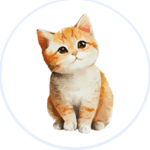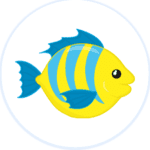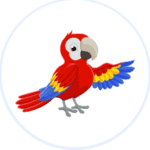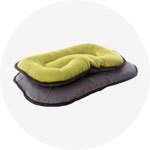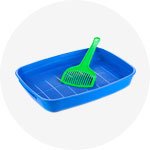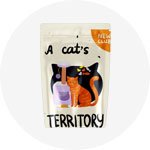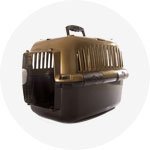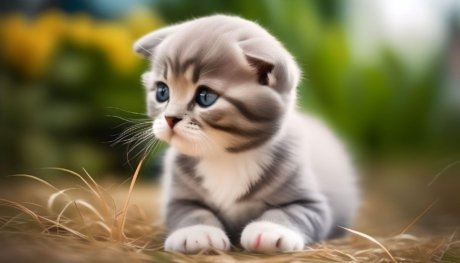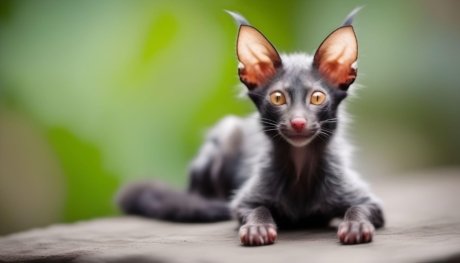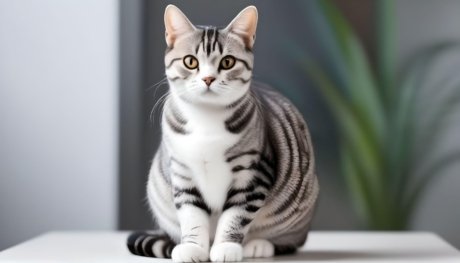Polydactyl Cats | Breed Profile, Price, 5 Types, Care Tips, Facts, Health
Polydactyl cats, with their captivating and distinctively charming appearance, have long held a special place in the hearts of cat enthusiasts and pet owners alike. These unique felines boast more toes than the standard cat, giving their paws an extraordinary and endearing quality. In this post, we’ll explore the fascinating world of Polydactyl cats, from their genetic traits and historical significance to their health considerations and care tips. Whether you’re a cat lover or simply intrigued by these delightful creatures, read on to discover the secrets and wonders of Polydactyl cats.
Polydactyl Cat
Polydactyl cats, also known as “Hemingway cats,” are a unique and fascinating feline breed characterized by an unusually high number of toes. While most cats typically have five toes on their front paws and four on their hind paws, polydactyl cats can have more than the standard number, giving them a distinctive appearance. This genetic trait is not limited to a specific breed and can be found in various cat breeds and mixed-breed cats.

One of the most notable features of polydactyl cats is their extra toes, which can vary in number and appearance. Some may have just one or two extra toes, while others can have up to seven or even more on a single paw. These extra toes can be fully formed and functional, resembling miniaturized additional paws, or they may appear as small, non-functional growths.
Polydactylism is believed to be a hereditary trait, and it has been associated with various breeds, including the Maine Coon and the American Shorthair. However, it’s important to note that polydactyl cats can be found in many breeds and in mixed-breed cats as well. These extra toes provide them with a unique advantage, often resembling thumbs, which can make them particularly dexterous and skilled at tasks like opening doors or manipulating objects.

The origin of the term “Hemingway cats” comes from the famous American author Ernest Hemingway, who had a special fondness for polydactyl cats. He was given a polydactyl cat by a ship’s captain, and this cat’s descendants still roam the Hemingway Home and Museum in Key West, Florida. Due to this connection, the term is often used to refer to polydactyl cats in general.
Polydactyl cats are cherished for their charming and distinctive appearance. Their extra toes add to their overall cuteness and uniqueness. They are popular pets in many households due to their endearing characteristics and playful personalities. While their extra toes are a prominent feature, it’s important to note that they do not cause any harm to the cat and do not require special care.
Polydactyl Kitten
A polydactyl kitten is an adorable and unique young cat with a genetic trait that results in extra toes on one or more of its paws. These kittens can exhibit a wide range of toe variations, from having one or two extra toes to several additional digits on their paws. Polydactyl kittens can be found in various breeds and mixed-breed cats, making them a delightful addition to any household. Their endearing appearance and playful nature make them a popular choice among cat lovers.

Polydactyl Cats Characteristics
Here are some common characteristics of Polydactyl Cats:
| Characteristic | Description |
|---|---|
| Extra Toes | Polydactyl cats have more than the standard number of toes on one or more of their paws. The number of extra toes can vary widely. |
| Appearance | They may have a distinctive and charming appearance due to their additional toes, which can resemble miniature paws or small, non-functional growths. |
| Genetic Trait | Polydactylism is believed to be a hereditary trait, and it is not specific to a particular breed. It can be found in various cat breeds and mixed-breed cats. |
| Playful Personality | Polydactyl cats are known for their playful and sociable nature. They often have a friendly and affectionate disposition. |
| Dexterity | Their extra toes, resembling thumbs, make them exceptionally dexterous. They can be skilled at tasks like opening doors and manipulating objects. |
| Hemingway Cats | The term “Hemingway cats” is often used to refer to Polydactyl cats, thanks to their association with the famous writer Ernest Hemingway, who had a fondness for them. |
| Unique Pets | Polydactyl cats are beloved by cat enthusiasts and those who appreciate their unique appearance and charming personalities. They make delightful and endearing pets. |
Normal Cat Paw Vs Polydactyl
Here is the comparison and differences between a normal cat paw and a Polydactyl (extra-toed) cat paw:
| Characteristic | Normal Cat Paw | Polydactyl Cat Paw |
|---|---|---|
| Number of Toes | Typically, normal cats have five toes on each front paw and four toes on each hind paw. | Polydactyl cats have more than the standard number of toes, varying from one or two extra toes to several additional digits on one or more of their paws. |
| Appearance | Normal cat paws appear with a typical feline structure, with five toes on the front and four toes on the hind paws. | Polydactyl cat paws can have a unique and charming appearance due to the presence of extra toes, which can vary in size and functionality. |
| Hereditary Trait | Normal cat paw structure is the standard for most feline breeds and is not associated with a specific hereditary trait. | Polydactylism is a genetic trait, which can be inherited and is often found in various cat breeds and mixed-breed cats. |
| Common Breeds | Normal cat paw structure is found in most cat breeds. | Polydactyl cats can be found in various breeds, including the Maine Coon, American Shorthair, and as mixed-breed cats. |
| Functional Differences | Normal cat paws are designed for typical feline activities like walking, climbing, and hunting. | Polydactyl cat paws, with their extra toes, can provide additional dexterity and are sometimes likened to having thumbs, making them adept at manipulating objects and performing unique tasks. |
| Notable History | Normal cat paws are the standard for the majority of domestic cats. | Polydactyl cats are often associated with the term “Hemingway cats” due to their connection with the writer Ernest Hemingway, who had a special fondness for them. |
Types of Polydactyl Cats
There are various types of Polydactyl cats, each with its own unique characteristics and genetic backgrounds. Polydactylism is not limited to a specific breed but can be found in different cat breeds and mixed-breed cats. Here are some notable types of Polydactyl cats:
1. Maine Coon Polydactyl:

The Polydactyl Maine Coon is a charming variation of the well-known Maine Coon breed, famous for its large size, tufted ears, and luxurious fur. What sets the Polydactyl Maine Coon apart is its extra toes, which can be found on one or more of its paws. These extra toes add to the Maine Coon’s already impressive presence and make them even more captivating. Known for their gentle and sociable nature, Polydactyl Maine Coons are beloved companions for those who appreciate their striking appearance and friendly disposition.
2. American Polydactyl Cat:

The American Polydactyl Cat, often associated with the “Hemingway cat” due to its connection to the famous writer Ernest Hemingway, is a unique and cherished feline breed. These cats can have extra toes on one or more of their paws, giving them a distinctive and endearing appearance. The American Polydactyl Cat is not limited to a specific breed but can be found in various breeds and mixed-breed cats. They are known for their playful personalities and their exceptional dexterity, often resembling having thumbs, which makes them adept at manipulating objects. These cats hold a special place in the hearts of cat enthusiasts and admirers of literary history, thanks to their association with the iconic author Ernest Hemingway.
3. Hemingway Home Cats:

The cats residing at the Ernest Hemingway Home and Museum in Key West, Florida, are predominantly Polydactyl cats. These felines are descendants of the original cat gifted to Ernest Hemingway. What’s fascinating about these cats is the diversity in their extra toes. Some have extra toes on just one paw, while others may have them on multiple paws, leading to a captivating array of appearances among them.
4. American Shorthair Polydactyl:
American Shorthair cats, a breed known for their adaptable and easygoing nature, can also exhibit Polydactylism. These cats have extra toes, often on their front paws, which enhance their appeal. The additional digits contribute to their unique look and playful disposition.

5. Mixed-Breed Polydactyl Cats:
Polydactylism is not confined to purebred cats and can be found in mixed-breed cats as well. These cats may have a diverse genetic background, and the presence of extra toes adds to their individuality. The numbers and functionality of the extra toes can vary widely among mixed-breed Polydactyl cats, making them intriguing and delightful pets.
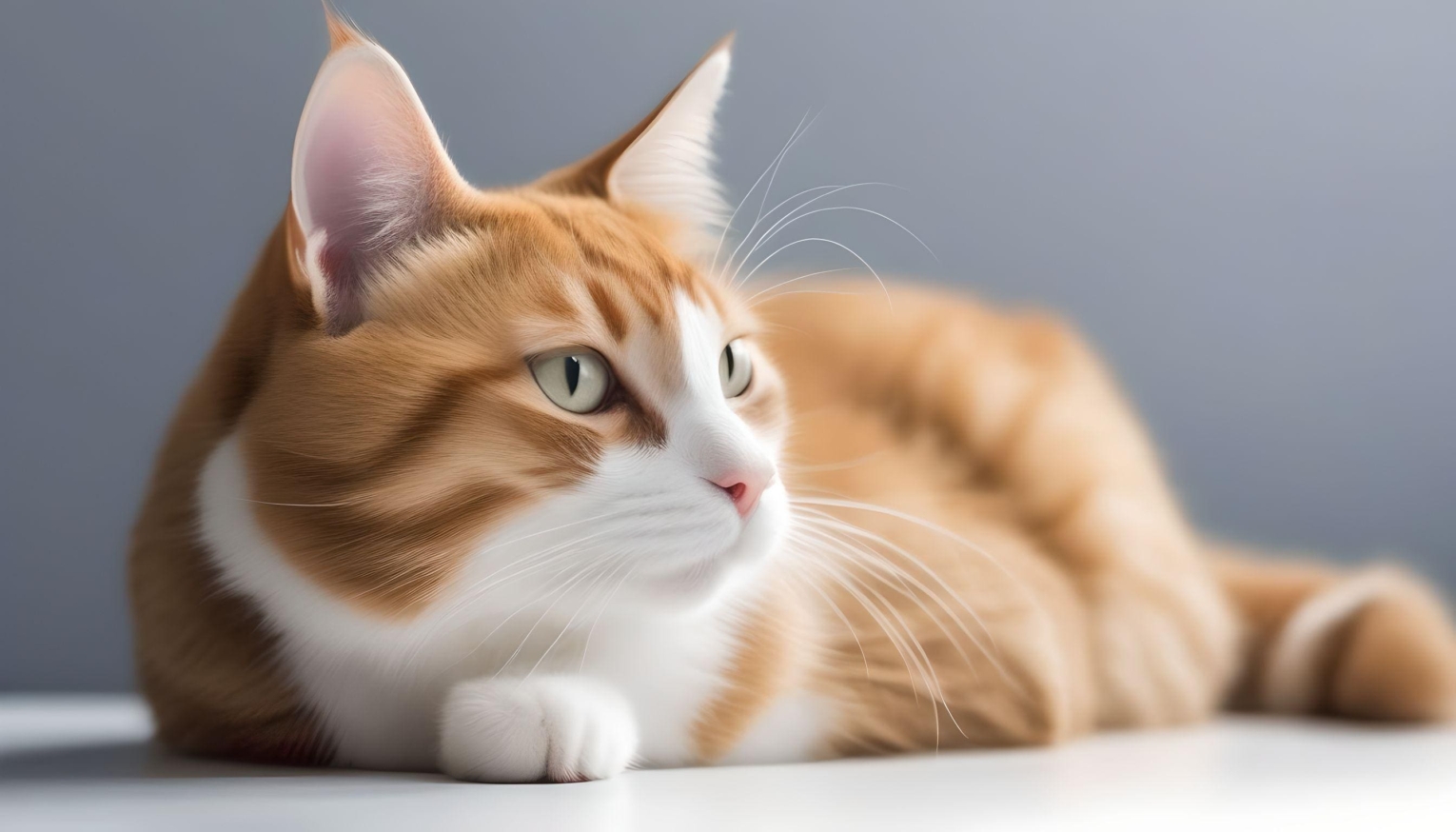
History of Polydactyl Cat
The history of Polydactyl cats dates back several centuries. It’s believed that this genetic trait originated in England and was brought to North America by early settlers. Polydactyl cats have been documented in various regions, including coastal areas of the United States and Canada. Their unique appearance and extra toes have captured the attention of cat enthusiasts and led to their popularity in different parts of the world.
Appearance of Polydactyl Cats
Polydactyl cats exhibit a distinctive appearance due to their extra toes. These additional digits can vary in number and size, making each cat unique. Some may have fully formed extra paws, while others may have smaller, non-functional growths. These extra toes give them a charming and endearing look, often resembling tiny mittens on their paws.
Temperament of Polydactyl Cat
Polydactyl cats are known for their friendly and sociable temperament. They are often described as affectionate and playful, making them wonderful companions. Their extra toes do not affect their personality, and they are cherished for their loving nature and their ability to form strong bonds with their owners.
Behaviour of Polydactyl Cat
In terms of behavior, Polydactyl cats are not significantly different from other cats. They exhibit typical feline behaviors such as playing, hunting, grooming, and exploring their surroundings. However, their extra toes can sometimes make them more dexterous and skilled at manipulating objects, which can lead to entertaining and unique behaviors.
Polydactyl Cats Personality
Polydactyl cats are known for their charming and sociable personalities. They are often outgoing and enjoy interacting with their human family members. Their playful and affectionate nature makes them highly sought-after pets. Their extra toes, which can resemble thumbs, contribute to their adaptability and ability to engage in various activities.
World Record Polydactyl Cat
The world record for the most toes on a Polydactyl cat is held by a cat named Jake, who had a staggering 28 toes. Jake’s remarkable condition garnered widespread attention and made him a unique and extraordinary feline. However, it’s essential to note that most Polydactyl cats do not have such an extreme number of extra toes.
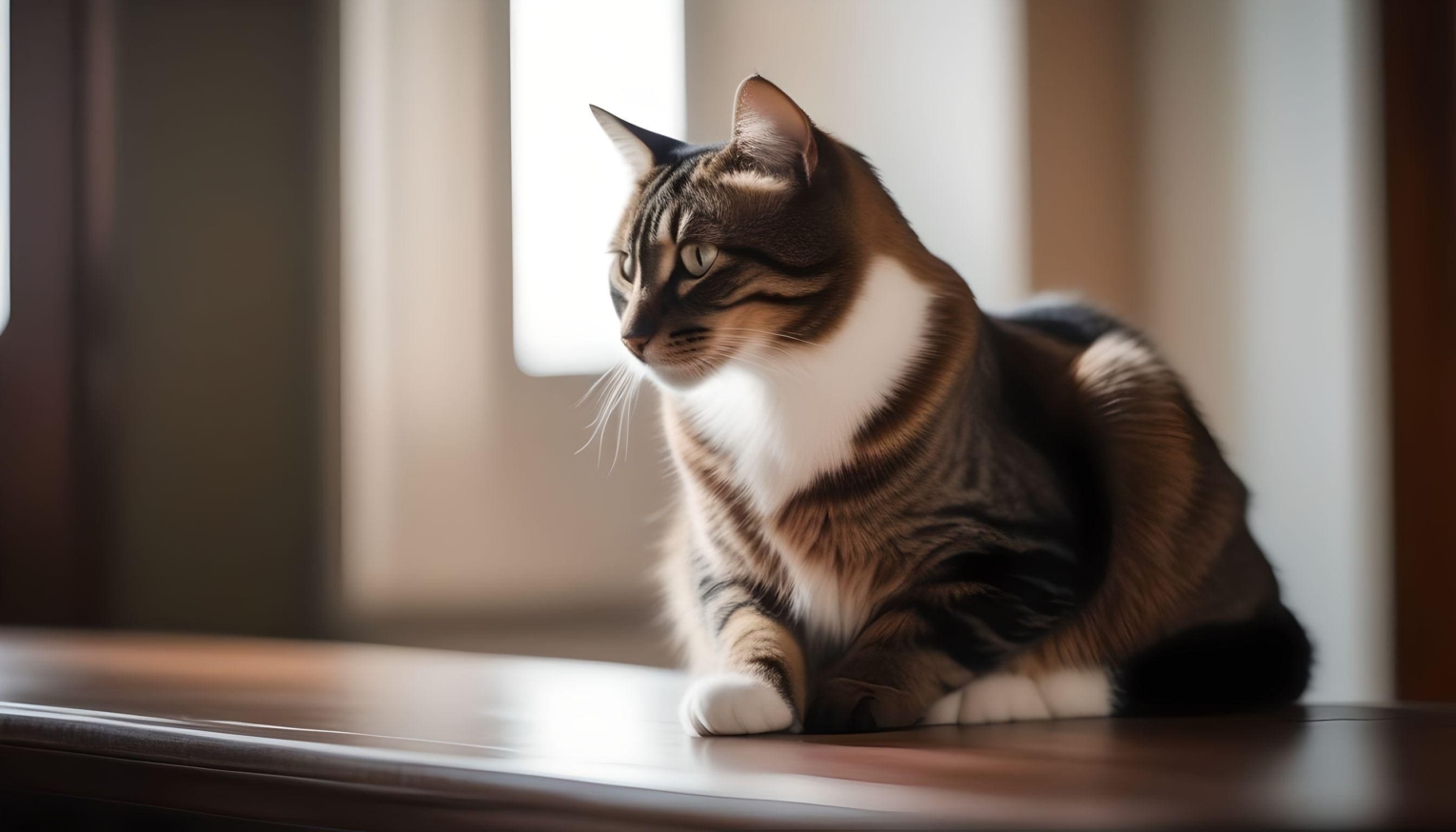
Are Polydactyl Cats Inbred
Polydactylism is not necessarily associated with inbreeding. While it can be more prevalent in certain lines of cats, it is primarily a genetic variation. Inbreeding can potentially increase the likelihood of Polydactylism, but many Polydactyl cats are not the result of inbreeding and are healthy and well-adjusted pets.
Are Polydactyl Cats Rare
Polydactyl cats are not exceedingly rare, but they are less common than cats with the standard number of toes. The prevalence of Polydactylism varies depending on the region and specific cat populations. In some areas, such as coastal regions of the United States, they may be more commonly found due to historical connections. However, their charming and distinctive appearance makes them highly valued among cat enthusiasts and admirers of unique feline traits.
Polydactyl Cat Price
In the USA, the cost of acquiring a Polydactyl cat, whether through adoption or purchase from a breeder, typically ranges from $50 to $200. In India, the price of a Polydactyl cat may be lower, averaging between INR 5,000 to INR 15,000 or more, although prices can vary depending on location and the cat’s lineage.
Polydactyl Cat Price in United States:
In the United States, where Polydactyl cats have a historical connection, you can find them in various price ranges. On average, in United States the price for a Polydactyl cat can range from $200 to $600 for a pet-quality cat, while show-quality or rare breed Polydactyls can be priced higher, often reaching into the thousands of dollars.
Polydactyl Cat Price in Canada:
In Canada, the price of Polydactyl cats is somewhat comparable to that in the United States. You can expect to pay anywhere from $200 to $600 for a pet-quality Polydactyl, with the price increasing for cats with special characteristics or pedigrees.
Polydactyl Cat Price in United Kingdom:
Polydactyl cats in the United Kingdom are relatively rare, and their prices can be higher compared to standard cats. The cost of a Polydactyl cat in the UK may range from £150 to £500 or more for a pet-quality cat. Breeder-quality or rare Polydactyl cats can be more expensive.
Polydactyl Cat Price in Australia:
In Australia, the price of Polydactyl cats can also vary. The average cost for a pet-quality Polydactyl cat may range from AUD 300 to AUD 800, depending on the region and availability. Rare breeds or show-quality cats can be priced higher.
Polydactyl Cat Price in India:
Polydactyl cats are less common in India, and their prices may vary based on location and availability. In India, you may find Polydactyl cats priced between INR 5,000 to INR 20,000 or more, with variations depending on factors like breed and appearance.
How Much Is A Polydactyl Cat Worth
The worth or value of a Polydactyl cat can vary significantly based on several factors. Here are some of the key considerations that influence the price of a Polydactyl cat:
- Pedigree and Breed: The breed and pedigree of a Polydactyl cat can have a significant impact on its price. Some Polydactyl cats may belong to specific breeds, such as the Maine Coon or American Shorthair, and have well-documented pedigrees, making them more valuable.
- Show Quality: Cats that meet the breed standards and are considered “show quality” may command higher prices due to their exceptional appearance and adherence to breed standards.
- Number of Extra Toes: The number of extra toes a Polydactyl cat has can influence its price. Cats with more extra toes may be considered rarer and therefore more valuable.
- Age and Health: Kittens are often less expensive than adult cats. A cat’s health and vaccination status can also affect its price. Healthy cats typically command higher prices.
- Geographic Location: The price of Polydactyl cats can vary based on the region or country. In areas with a higher demand for these unique cats, prices may be higher.
- Breeder or Adoption: Purchasing a Polydactyl cat from a reputable breeder may be more expensive than adopting one from a shelter or rescue organization. Adoption fees are generally more affordable and provide a loving home for a cat in need.
On average, the price of a pet-quality Polydactyl cat may range from $200 to $600, but prices can go much higher for show-quality or rare breed Polydactyls. Keep in mind that these are approximate price ranges, and actual prices may vary based on individual sellers and specific circumstances.
Polydactyl Cat Prices In Major USA and Indian Cities
Here are the approximate price ranges for Polydactyl cats in major cities in the USA and India:
| City | Polydactyl Cat Price Range (USD) |
|---|---|
| New York City, USA | $300 – $800 |
| Los Angeles, USA | $250 – $700 |
| Chicago, USA | $300 – $750 |
| Houston, USA | $250 – $650 |
| San Francisco, USA | $350 – $900 |
| Dallas, USA | $280 – $720 |
| Atlanta, USA | $270 – $690 |
| Miami, USA | $320 – $800 |
| Boston, USA | $290 – $750 |
| Philadelphia, USA | $270 – $700 |
| Mumbai, India | ₹10,000 – ₹25,000 |
| Delhi, India | ₹8,000 – ₹20,000 |
| Bangalore, India | ₹9,000 – ₹22,000 |
| Kolkata, India | ₹8,500 – ₹21,000 |
| Chennai, India | ₹9,500 – ₹23,000 |
| Hyderabad, India | ₹9,200 – ₹23,500 |
| Pune, India | ₹8,800 – ₹22,500 |
| Ahmedabad, India | ₹8,600 – ₹21,500 |
| Jaipur, India | ₹8,300 – ₹21,000 |
| Chandigarh, India | ₹8,400 – ₹21,200 |
Factors that Affect the Price of Polydactyl Cats
Some common Factors that Affect the Price of Polydactyl Cats:
- Breed and Pedigree: The breed of the Polydactyl cat plays a significant role in determining its price. Some breeds, like the Maine Coon or American Shorthair, are more commonly associated with Polydactylism. Additionally, cats with well-documented pedigrees and lineage may command higher prices.
- Quality and Conformation: Show-quality Polydactyl cats, which closely adhere to breed standards and have exceptional conformation, are generally more expensive than those considered pet quality.
- Number of Extra Toes: The number of extra toes the cat has can influence its price. Cats with a higher number of extra toes may be considered rarer and therefore more valuable.
- Age: Kittens are often less expensive than adult cats. The age of the cat can affect its price, with younger cats typically being more affordable.
- Health and Vaccination Status: The health and vaccination status of the cat can impact its price. Cats with up-to-date vaccinations and a clean bill of health typically command higher prices.
- Geographic Location: The price of Polydactyl cats can vary significantly based on the region or country. In areas with a higher demand for these unique cats, prices may be higher.
- Breeder Reputation: Reputable breeders with a track record of producing healthy and well-socialized Polydactyl cats may charge higher prices for their kittens.
- Rare Traits or Colors: Polydactyl cats with rare coat colors, patterns, or other unique traits may be priced higher due to their distinctive appearance.
- Genetic Lineage: Cats with a lineage that includes multiple generations of Polydactylism may be considered more valuable.
- Market Demand: Market demand and trends can influence the price of Polydactyl cats. If these cats are currently in high demand, prices may rise.
Monthly Maintenance Cost of Polydactyl Cats:
The monthly maintenance cost of a Polydactyl cat, like any other cat, includes several expenses:
- Food: High-quality cat food is essential for their health. Expect to budget for both wet and dry food options.
- Litter: Litter for the cat’s litter box is a recurring expense.
- Veterinary Care: Regular check-ups, vaccinations, and any necessary medical treatments or medications should be factored in.
- Grooming: Some Polydactyl cats, particularly long-haired breeds, may require additional grooming.
- Toys and Accessories: Providing toys, scratching posts, and other accessories for enrichment is important.
- Pet Insurance: Some owners opt for pet insurance to cover unexpected medical expenses.
- Licensing and Microchipping: These costs can vary by location and local regulations.
- Spaying/Neutering: If not already done by the breeder, this is an important procedure to consider.
- Emergency Fund: Having an emergency fund for unexpected vet bills is a wise financial practice.
- Boarding or Pet Sitting: If you travel, you may need to budget for pet care during your absence.
Facts about Polydactyl Cats
Here are some interesting facts about Polydactyl cats:
- Ernest Hemingway’s Love: The term “Hemingway cats” is often used to refer to Polydactyl cats, as the famous writer Ernest Hemingway had a deep affection for them. He was gifted a Polydactyl cat by a ship’s captain, and today, his former residence in Key West, Florida, is home to numerous Polydactyl descendants.
- Genetic Trait: Polydactylism is a genetic trait that results in cats having more than the standard number of toes. It’s not limited to a specific breed and can occur in various cat breeds and mixed-breed cats.
- Extra Toes Variability: Polydactyl cats can have a wide range of extra toes, from one or two additional toes to several extra digits on one or more paws. The number and appearance of these extra toes can vary greatly.
- Dexterity: Their extra toes, resembling thumbs, can make Polydactyl cats more dexterous and skilled at manipulating objects. They are often known for their ability to open doors and perform unique tasks.
- Variety of Breeds: While Polydactyl cats are commonly associated with certain breeds like the Maine Coon and American Shorthair, they can be found in many other breeds and mixed-breed cats.
- Unique Appearance: Polydactyl cats have a distinctive and charming appearance due to their extra toes, which can resemble miniaturized paws or small, non-functional growths.
- Friendly and Sociable: Polydactyl cats are often noted for their friendly and sociable nature. They are typically affectionate and enjoy interacting with their human companions.
- Historical Connection: The presence of Polydactyl cats in North America is linked to early settlers, who brought these cats with them from England. They have been documented in coastal regions of the United States and Canada.
- Not a Health Concern: Having extra toes does not typically pose a health concern for Polydactyl cats. It’s a genetic variation, and they can lead healthy and happy lives.
- Unique and Adorable Pets: Their unique appearance and charming personalities make Polydactyl cats beloved pets for those who appreciate their distinctive traits. They have found a special place in the hearts of cat enthusiasts and admirers of unique feline characteristics.

Pros and Cons of Polydactyl Cats
Some common pros and cons of Polydactyl cats:
| Pros of Polydactyl Cats | Cons of Polydactyl Cats |
|---|---|
| 1. Unique Appearance: Polydactyl cats have a charming and distinctive appearance due to their extra toes. | 1. Health Concerns: In some cases, the presence of extra toes can lead to specific health issues, such as ingrown nails or arthritis. Regular veterinary check-ups are essential. |
| 2. Dexterity: Their extra toes can make them more dexterous, and they are often skilled at manipulating objects and performing unique tasks. | 2. Grooming Needs: Some Polydactyl cats, particularly those with long hair, may require more extensive grooming to keep their extra toes clean and free from debris. |
| 3. Friendly and Sociable: Polydactyl cats are known for their friendly and sociable nature. They often form strong bonds with their human companions. | 3. Breeding Challenges: Breeding Polydactyl cats can be more complex due to the genetic factors involved. Ensuring healthy breeding practices is essential. |
| 4. Historical Significance: The term “Hemingway cats” is associated with Polydactyl cats, thanks to their connection with the famous writer Ernest Hemingway. | 4. Adaptation for Outdoor Cats: Extra toes may not be as advantageous for cats that spend a lot of time outdoors, as they can get caught in objects or pose challenges for climbing and hunting. |
| 5. Endearing Personalities: They are often characterized by their playful and affectionate personalities, making them delightful and loving companions. | 5. Breed Variability: While some breeds are known for Polydactylism, it can occur in various breeds and mixed-breed cats, which may lead to differences in appearance and characteristics. |
Care Tips for Polydactyl Cats
Caring for a Polydactyl cat is much like caring for any other cat. However, there are some specific considerations due to their extra toes. Here are some care tips for Polydactyl cats:
- Regular Veterinary Check-ups: Ensure your Polydactyl cat receives regular veterinary check-ups. These appointments are essential for monitoring their overall health, especially since some Polydactyl cats may be more prone to certain health issues.
- Proper Nutrition: Provide your cat with a balanced and high-quality cat food. Consult with your veterinarian to determine the best diet based on your cat’s age, activity level, and health requirements.
- Grooming: Regular grooming is important, especially for Polydactyl cats with long or dense fur. Brush their coat to prevent matting and reduce the risk of ingrown nails due to their extra toes. Keep an eye on their extra toes for any signs of debris or discomfort.
- Litter Box Care: Ensure that the litter box is clean and easily accessible. The presence of extra toes may affect their ability to scratch and bury waste, so it’s important to keep the litter box clean to avoid litter box issues.
- Environmental Enrichment: Provide your Polydactyl cat with a stimulating environment. Offer toys, scratching posts, and opportunities for play and exercise. Their extra toes can make them more dexterous, so interactive toys can be especially engaging.
- Safety Precautions: Pay attention to safety, as extra toes can get caught in objects. Remove any hazards that could pose risks to your cat.
- Health Monitoring: Keep a close watch on your Polydactyl cat’s overall health, especially their joints and extra toes. If you notice any signs of discomfort, consult your veterinarian for guidance.
- Spaying/Neutering: Ensure that your cat is spayed or neutered, which is essential for their health and population control.
- Regular Playtime: Dedicate time to play and interact with your Polydactyl cat. They are known for their sociable nature and enjoy bonding with their human companions.
- Love and Attention: Provide love and attention to your Polydactyl cat. They thrive on social interaction and will form strong bonds with their owners.
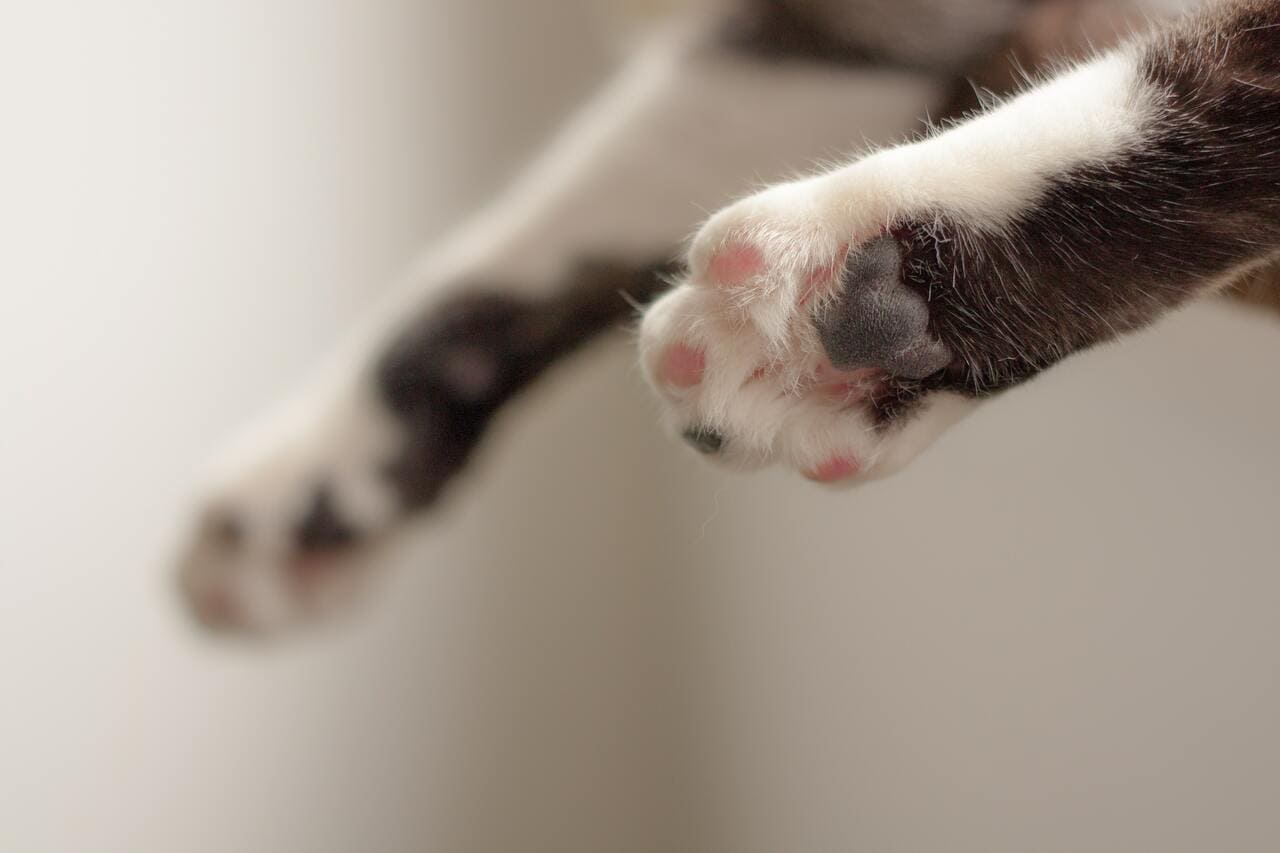
Polydactyl Cat Paw
A Polydactyl cat paw is unique because it has more toes than the standard cat paw. Typically, cats have five toes on their front paws and four on their hind paws, but Polydactyl cats can have extra toes, giving their paws a charming and distinctive appearance. These extra toes are a genetic trait, and they may vary in size and functionality, with some resembling miniature paws or small growths. Polydactyl cats are known for their dexterity and friendly personalities, making them beloved pets for many cat enthusiasts.
Polydactyl Cats Health Issues
Polydactyl cats, like all cats, can experience various health issues. While the presence of extra toes itself is not a health concern, there are some specific considerations and potential health issues associated with Polydactyl cats:
- Ingrown Nails: Polydactyl cats may be more prone to ingrown nails due to the presence of extra toes. Regular nail trimming is essential to prevent this issue. If ingrown nails occur, they can cause pain and discomfort and may require veterinary attention.
- Arthritis: The presence of extra toes can sometimes lead to arthritis in Polydactyl cats. This is more common in cats with a high number of extra toes. Arthritis can cause joint pain and stiffness, and it’s important to monitor their mobility and comfort.
- Obesity: Polydactyl cats, like any other cats, can be at risk of obesity. Obesity can lead to various health problems, so it’s crucial to monitor their weight and provide a balanced diet and regular exercise.
- Orthopedic Issues: Extra toes can affect the structure and alignment of a cat’s paws, potentially leading to orthopedic issues. Pay attention to any signs of lameness, limping, or discomfort, and consult with your veterinarian if you have concerns.
- Cardiovascular Disease: Some studies have suggested a potential link between Polydactylism and congenital heart disease, but this is not a common issue. Regular check-ups with a veterinarian can help detect and address any heart-related concerns.
- Genetic Disorders: Polydactyl cats may be more prone to certain genetic disorders, depending on their breed and lineage. It’s essential to be aware of any specific genetic concerns associated with your cat’s breed and lineage.
Polydactyl Cat Lifespan
The lifespan of a Polydactyl cat, like that of any cat, can vary based on factors such as genetics, overall health, diet, and living conditions. On average, Polydactyl cats can live for around 15 to 18 years or even longer with proper care. Some may have genetic predispositions to certain health issues, so regular veterinary check-ups, a balanced diet, and a safe and stimulating environment are crucial for ensuring a longer and healthier life for your Polydactyl cat.
Food for Polydactyl Cats
Some common Food options for Polydactyl Cats:
| Food Type | Description |
|---|---|
| Dry Cat Food | Provides dental benefits and is convenient for feeding, but may require sufficient water intake. |
| Wet Cat Food | Offers hydration and can be more palatable, but may contribute to dental issues if not supplemented with dry food. |
| Raw Cat Food | Mimics a cat’s natural diet and can be beneficial, but it requires careful handling and may not be suitable for all cats. |
| High-Quality Commercial Cat Food | Balanced and nutritionally complete cat food recommended by veterinarians. |
| Homemade Cat Food | Can be tailored to your cat’s specific needs, but it must be carefully prepared to meet nutritional requirements. |
Polydactyl Cat Names
Popular Names for Polydactyl Cats:
| Male Cat Names | Female Cat Names |
|---|---|
| Simba | Luna |
| Oliver | Bella |
| Leo | Nala |
| Charlie | Daisy |
| Max | Sophie |
| Jasper | Lucy |
| Felix | Zoe |
| Milo | Mia |
| Teddy | Cleo |
| Loki | Willow |
Polydactyl Cat Video
Conclusion:
In conclusion, Polydactyl cats are endearing and distinctive felines with more toes than the standard cat. Their unique appearance, charming personalities, and historical significance have made them beloved pets and even cultural icons. While their extra toes can add to their dexterity and uniqueness, they require the same care and attention as any other cat to lead happy and healthy lives. Whether found in specific breeds or among mixed-breed cats, Polydactyl cats continue to capture the hearts of cat enthusiasts and admirers of their special traits.
Frequently Asked Questions on Polydactyl Cats:
-
What is a Polydactyl cat?
A Polydactyl cat is a feline with more toes than the standard number, which is typically five on the front paws and four on the hind paws. Polydactylism is a genetic trait that can lead to extra toes, giving their paws a unique appearance.
-
Are Polydactyl cats a specific breed?
No, Polydactylism is not confined to a specific breed. Polydactyl cats can be found in various breeds and mixed-breed cats. Some breeds, like the Maine Coon and American Shorthair, are more commonly associated with Polydactylism.
-
Do the extra toes affect a Polydactyl cat’s health or mobility?
In most cases, the extra toes do not significantly affect a Polydactyl cat’s health or mobility. However, they may require additional grooming and care, and some cats with a high number of extra toes might experience dexterity challenges.
-
How did Polydactyl cats get their name?
The term “Polydactyl” is derived from the Greek words “poly,” meaning “many,” and “daktylos,” meaning “fingers” or “toes.” It aptly describes cats with multiple extra toes.
-
Are there any famous Polydactyl cats?
Yes, the author Ernest Hemingway had a special fondness for Polydactyl cats, and his former residence in Key West, Florida, is home to many of their descendants. These cats are often referred to as “Hemingway cats.”
-
Can I adopt a Polydactyl cat from a shelter or rescue organization?
Yes, many Polydactyl cats are available for adoption at shelters and rescue organizations. Adopting a Polydactyl cat is a great way to provide a loving home to a unique and charming feline companion.
-
Are Polydactyl cats more expensive than regular cats?
The price of a Polydactyl cat can vary based on factors like breed, pedigree, and quality. While they may be more expensive in some cases, many are reasonably priced, and you can also adopt them from shelters at a lower cost.
-
Can I breed Polydactyl cats intentionally?
Breeding Polydactyl cats intentionally is possible, but it’s important to ensure responsible breeding practices. Breeding should prioritize the health and well-being of the cats and adhere to ethical standards.
-
Do extra toes affect a Polydactyl cat’s behavior or personality?
Extra toes do not significantly alter a Polydactyl cat’s behavior or personality. They are known for being friendly, sociable, and affectionate, much like other cats.
-
Are Polydactyl cats recognized in cat shows?
Polydactylism is not a factor typically recognized in cat shows. Cats are judged based on breed standards and conformation rather than the number of toes they possess.
Recommended –
- Maine Coon Cat | Breed Information, Price, 10 Types, Facts, Care Tips, Health
- Airedale Terrier | Breed Information, Prices, History, 9 Facts, Care Tips
- Weimaraner Dog | Breed Information, Price, 8 Types, Care Tips, Facts, Health
- Plott Hound Dog | Breed Profile, Prices, 10 Facts, Care Tips, Health Issues
- Rabbit Price in India, USA, UK | Everything you need to Know about Rabbits


